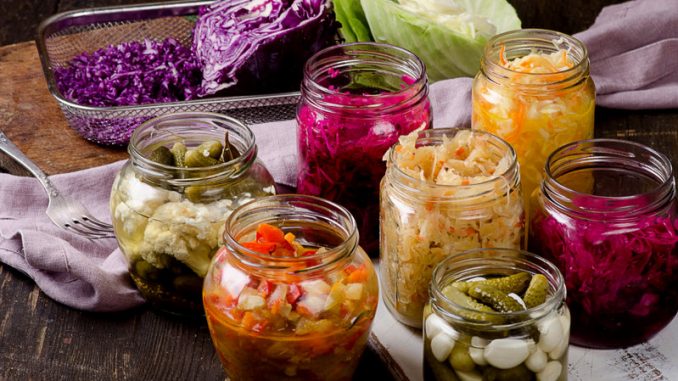
Introduction
Pickled vegetables of any kind bring a welcome acidic tang to any savoury dish. Not only are they quick to prepare but also easy to keep in the refrigerator. Pickling, especially when it’s done quickly is also a great way of preserving food and relies on a combination of acid and often high levels of salt to act as a preserving medium which infuses the vegetables with flavour.
Pickling is a great way of introducing flavours of herbs and spices into food because it infuses the pickle with special delicious flavour. An absolute powerhouse of opportunity awaits the pickler. Try different vinegars too because you can bring the power of this into condiment. Just think of the benefits of apple cider vinegar which in recent times has become of the most potent health supplements in the western world
Remember they will not keep as long as fermented vegetables which are salted and pickled so the quick pickles need to be used within a few days ideally. If you are interested in pickled vegetables then look at how kimchi and pickled daikon is prepared as it’s an interesting approach to introducing Far Eastern flavour into your dishes.
What are Quick Pickled Vegetables?
Quick pickles especially vegetables are often known as refrigerator pickles because that’s how they need to be stored in the fridge. You simply pickle the product in an acidic brining solution which is always vinegar, salt with sometimes sugar. Some water is usually added. That’s the basic recipe.
Fancy jars of pickles often have added seeds, herbs, peppers and so on to bring layers of flavour. The deep penetrating flavour you find with fermented pickles wont be present though so don’t expect that. These quick pickles are designed for other purposes. They still take a few days to prepare but once they are made they are all the more enjoyable for your patience. They are also usually bottled and mason jars seem to be the best packaging for them.
Adding sugar will lend some sweetness which alters the flavour profile. An interesting idea with pungent vegetables like onions.
Make sure the jars and lids used are as clean as possible. I usually heat glass jars in particular in the oven at 90ºC for 10 minutes and then leave to cool to room temperature beforehand before using.
[Please note we are an affiliate marketing partner and will make a sales commission if you purchase any items through our affiliate links. Please read our affiliate disclosure]
Equipment
-
-
Kitchen knives and chopping boards
- Kilner jars and pickling jars with lids
-
Canning or bottling funnels
-
Ingredients For The Pickling Mixture
To make 2 cups:
- 1 cup apple cider vinegar or malt vinegar or rice vinegar
- 4-5 tsp. salt – can be kosher. Maldon sea salt seems a good idea.
- 1 tbsp. sugar (optional)
- 2 cups of vegetables – thinly sliced, carrot, red and white onion, cucumber – a mixture or pickled individually – your choice.
Preparation:
- Dissolve the salt into the vinegar along with any sugar in a small bowl. Rapid stirring is needed for a quick dissolution.
- Add the cut vegetables. The more watery ones benefit from some hand squeezing to release any extra water. Just dab with a paper towel. It helps the uptake of the pickling mixture.
- Place in a clean kilner or jar with a secure lid.
Use within 3 days. Given no sterilizing of the vegetables is possible in this procedure it means that stored cold but quick pickles should be eaten as soon as possible. We wouldn’t want anyone to suffer botulism. There are web-sites out there who advocate some highly dubious practices of leaving the pickled vegetables longer and at room temperature.

Leave a Reply